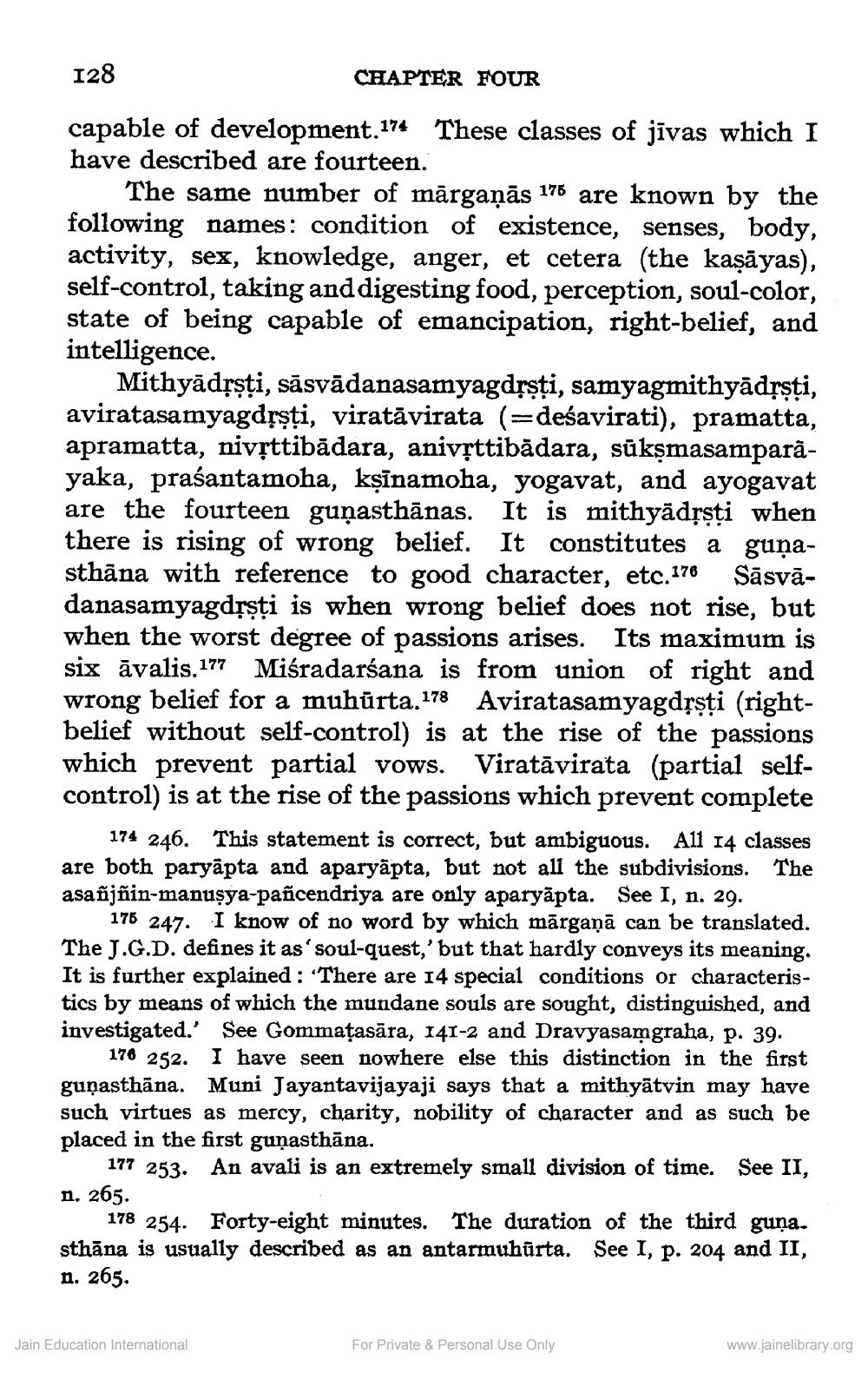________________
128
CHAPTER FOUR
capable of development.174 These classes of jīvas which I have described are fourteen.
The same number of mārgaņās 176 are known by the following names: condition of existence, senses, body, activity, sex, knowledge, anger, et cetera (the kaşāyas), self-control, taking and digesting food, perception, soul-color, state of being capable of emancipation, right-belief, and intelligence.
Mithyādņsti, sāsvādanasamyagdssti, samyagmithyādņsti, aviratasamyagdņşti, viratavirata (=deśavirati), pramatta, apramatta, nivsttibādara, anivsttibādara, sūksmasamparāyaka, praśantamoha, kşīnamoha, yogavat, and ayogavat are the fourteen guṇasthānas. It is mithyādņsti when there is rising of wrong belief. It constitutes a guņasthāna with reference to good character, etc.176 Sāsvādanasamyagdsști is when wrong belief does not rise, but when the worst degree of passions arises. Its maximum is six āvalis.177 Miśradarśana is from union of right and wrong belief for a muhurta.178 Aviratasamyagdụsti (rightbelief without self-control) is at the rise of the passions which prevent partial vows. Viratāvirata (partial selfcontrol) is at the rise of the passions which prevent complete
174 246. This statement is correct, but ambiguous. A11 14 classes are both paryāpta and aparyāpta, but not all the subdivisions. The asañjñin-manusya-pañcendriya are only aparyāpta. See I, n. 29.
176 247. I know of no word by which mārgaņā can be translated. The J.G.D. defines it as'soul-quest,' but that hardly conveys its meaning. It is further explained : There are 14 special conditions or characteristics by means of which the mundane souls are sought, distinguished, and investigated.' See Gommațasāra, 141-2 and Dravyasamgraha, p. 39.
176 252. I have seen nowhere else this distinction in the first gunasthāna. Muni Jayantavijayaji says that a mithyātvin may have such virtues as mercy, charity, nobility of character and as such be placed in the first guņasthāna.
177 253. An avali is an extremely small division of time. See II, n. 265.
178 254. Forty-eight minutes. The duration of the third guna. sthāna is usually described as an antarmuhūrta. See I, p. 204 and II, n. 265.
Jain Education International
For Private & Personal Use Only
www.jainelibrary.org




